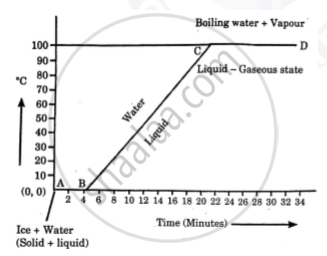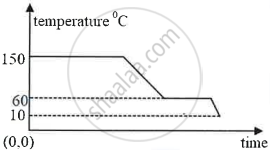Advertisements
Advertisements
प्रश्न
What do you understand by the term latent heat?
उत्तर
The heat energy exchanged in change of phase is not externally manifested by any rise or fall in temperature, it is considered to be hidden in the substance and is called the latent heat.
APPEARS IN
संबंधित प्रश्न
State any two measures to minimize the impact of global warming.
1 g ice of 0℃ melts to form 1 g water at 0℃. State whether the latent heat is absorbed or given out by ice.
- Which requires more heat: 1 g ice at 0℃ or 1 g water at 0℃ to raise its temperature to 10℃?
- Explain your answer in part (a).
Calculate the total amount of heat energy required to convert 100 g of ice at −10℃ completely into water at 100℃. Specific heat capacity of ice = 2.1 J g-1 K-1, specific heat capacity of water = 4.2 J g-1K-1, specific latent heat of ice = 336 J g-1.
Water expands on reducing its temperature below ______°C.
Explain the following temperature Vs. time graph:

Explain the meaning of the term latent heat. State its S. I. unit.
When 1 g of ice at 0 °C melts to form 1 g of water at 0 °C then, is the latent heat absorbed by the ice or given out by it?
Why does weather become pleasant when it starts freezing in cold countries?
Why do we feel much comfortable when we sit under a moving fan especially when our body is sweating?
State two advantages of the high specific latent heat capacity of steam, which is about 226 × 104 J/kg?
What observation you will record and how will you determine the specific latent heat of fusion of ice?
Find the odd one out and give its explanation.
How fog is formed?
Write scientific reason.
Use a pressure cooker to cook food in cold air.
For the same mass of ice and ice-cold water, why does ice produce more cooling than ice-cold water?
Calculate the amount of heat required to convert 200g of ice at 0°C into the water at 0°C Specific latent heat of fusion of ice = 336 Jg-1
The diagram below shows a cooling curve for a substance:

- State the temperatures at which the substance condenses.
- The temperature range in which the substance is in liquid state.
- Why do we prefer ice to ice-cold water for cooling a drink?
